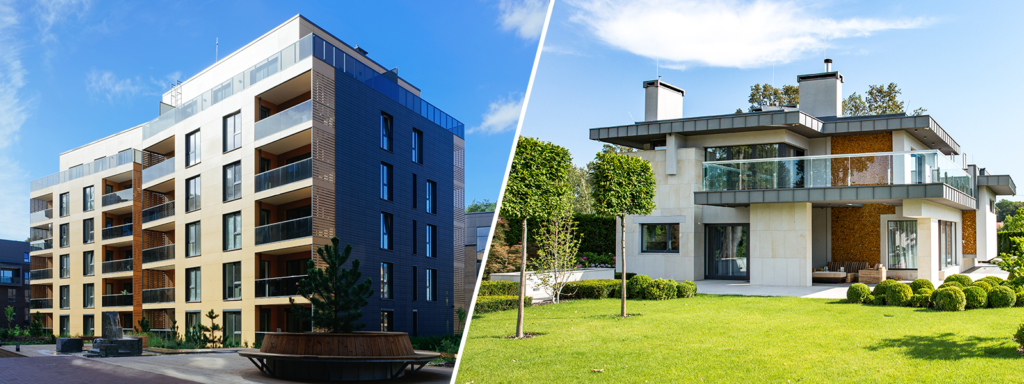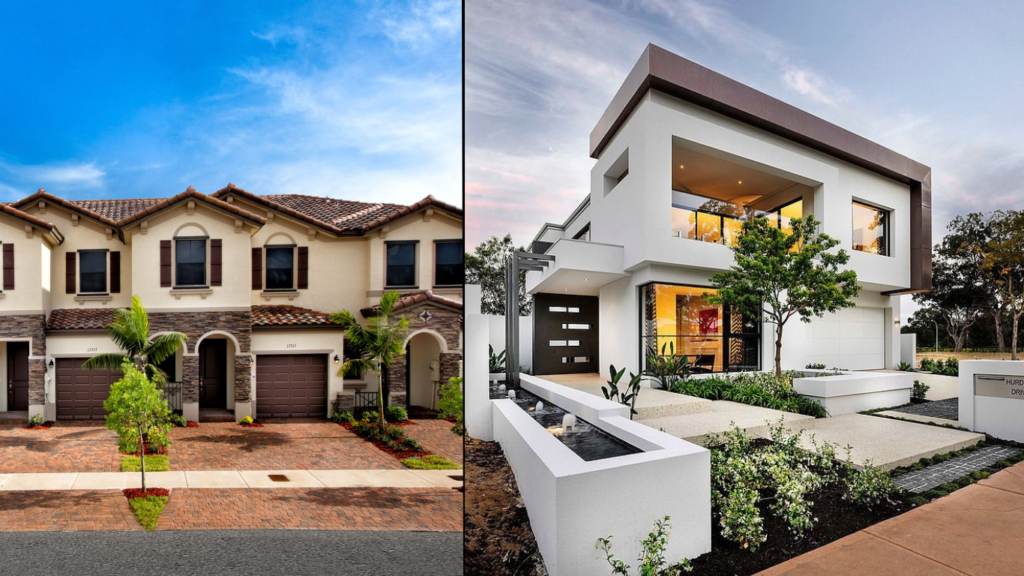A villa and a house are both types of residential dwellings, but their meanings can vary based on cultural and regional contexts. A house is a general term for a place of residence, and it can be a single-family or multi-family dwelling found in various settings. Houses typically have private outdoor spaces. In contrast, a villa often refers to a specific type of house associated with luxury and larger size. Villas are known for their spacious, elegant design, and they are commonly used as vacation rentals in scenic locations, often featuring amenities like private pools.
However, the usage of these terms can differ significantly between regions and cultures, and the distinction between them may be influenced by local customs, real estate markets, and architectural styles.
How do houses vary in design and use?

A house is a type of residential dwelling, typically designed for people to live in. It serves as a place for individuals or families to reside and carry out their daily activities. Houses come in various shapes, sizes, and architectural styles, and the specific characteristics may vary widely depending on cultural and regional factors.
Characteristics of a house
Single-family vs. multi-family: Houses can be categorized into two primary types: single-family and multi-family homes.
Single-family houses are designed to accommodate a single household or family unit. They are standalone structures that provide privacy and are commonly found in suburban and rural areas.
Multi-family houses are designed to house multiple families in separate units within the same building. This category includes duplexes, townhouses, and apartment buildings. Multi-family houses are often located in urban areas, where space is limited.
Residential settings: Houses are typically located in a variety of residential settings, each with its own characteristics.
Urban houses are situated in city centers or densely populated areas, offering proximity to workplaces, services, and amenities. They may include townhouses or row houses.
Suburban houses are found in the outskirts of cities and are known for their larger lot sizes, providing more space for outdoor activities and gardens.
Rural houses are often located in the countryside, offering a quieter and more secluded living experience. These houses may be surrounded by farmland or natural landscapes.
Private outdoor spaces:
Most houses, regardless of their location or type, come with private outdoor spaces that residents can use exclusively.
Private outdoor spaces can include front yards, backyards, gardens, patios, or terraces. These spaces are often used for recreational activities, gardening, or relaxation.
The presence of private outdoor spaces allows for personalization and customization of the surroundings to suit the preferences of the homeowners. It also provides a sense of ownership and privacy not always available in other types of housing.
What defines a villa and its characteristics?
A villa is a specific type of residential property characterized by its luxurious and spacious design. The term “villa” is often associated with elegance, comfort, and a certain lifestyle, and it is commonly found in upscale or scenic locations. Villas typically serve as private retreats, second homes, or vacation rentals.
Characteristics of a villa
Villas are known for their opulent and generous design. They are often larger than standard houses and feature high-end finishes and furnishings.
The interior of a villa is designed to provide comfort and convenience, with spacious living areas, multiple bedrooms, and modern amenities.
Architecturally, villas may incorporate elements such as grand entrances, high ceilings, and well-appointed rooms. They may also have features like large windows to capture scenic views.
Association with vacation rentals:
Villas are frequently used as vacation rentals, especially in tourist destinations or exotic locations.
Renting a villa allows guests to enjoy a private and luxurious accommodation experience. They can have the entire property to themselves, which offers more privacy and personalization than a traditional hotel.
Vacation rental villas are often equipped with concierge services, housekeeping, and amenities like private chefs, making them ideal for travelers seeking a high-end and exclusive experience.
Features like private pools and gardens
Many villas boast additional amenities that enhance the guest or owner’s experience, such as private pools, gardens, and outdoor spaces.
Private pools are a common feature in villas, allowing guests to swim, relax, and enjoy the outdoors in a secluded and tranquil setting.
Gardens and landscaped areas contribute to the villa’s aesthetic appeal and provide a space for outdoor dining, relaxation, or recreational activities.
These features are designed to enhance the overall luxury and exclusivity of the villa experience.
How do regional and cultural Variations influence house and villa distinctions?

The interpretation and usage of the terms “villa” and “house” can vary significantly based on the region and culture. Here are some key ways in which these variations occur:
Terminological Differences: In some regions, the terms “villa” and “house” may have different connotations than in others. For instance, in Mediterranean countries like Italy, Spain, and Greece, a “villa” may refer to a rural or country house, often with historical or architectural significance, while a “house” could denote a more standard residential dwelling. In contrast, in tropical tourist destinations, a “villa” is more likely to be a luxurious vacation rental, whereas a “house” might be a more conventional family home.
Architectural Styles: Architectural traditions and styles vary from place to place, influencing the design and layout of both villas and houses. For example, houses in Japan may have a distinct architectural style with sliding doors and minimalistic design, while Mediterranean villas might feature elements like terracotta roofs and stucco exteriors. These regional architectural styles can contribute to the differences in the appearance and functionality of houses and villas.
Historical Significance: Historical and cultural factors can also shape the meaning of these terms. In some regions, the concept of a villa might be linked to historical estates or colonial influences, while houses might reflect local building traditions and indigenous architectural elements.
Influence of local customs and architectural styles
Local customs and architectural styles play a significant role in differentiating houses and villas within a particular region or culture. Here’s how they can influence the properties:
Building Materials: Local availability of building materials can impact the construction of houses and villas. Traditional materials, like adobe in some Southwestern U.S. states, can influence the architectural style and appearance of homes in the area.
Climate Adaptation: Houses and villas often need to adapt to the local climate. In hot and arid regions, you may find houses with thick walls and small windows for insulation, while villas in tropical locations may have open designs to encourage natural ventilation.
Cultural Preferences: Cultural norms and customs also impact the layout and design of houses and villas. For instance, in cultures that emphasize communal living, you may find houses with larger common areas, while more individualistic cultures might favor private spaces.
Regional Aesthetics: Local aesthetics and preferences for architectural features, such as roof styles, color palettes, and landscaping, can distinguish houses and villas. These choices reflect the cultural identity and tastes of a specific region.
FAQ’s
Is villa better than mansion?
The preference between a villa and a mansion depends on individual tastes. Villas are often associated with luxury and scenic locations, while mansions are known for their grand size. It’s a matter of personal choice.
Which country has the best villas in the world?
The concept of the “best” villas can be subjective, but countries like Italy, Spain, Greece, and tropical destinations like the Maldives and Bali are renowned for their stunning villas.
Where is the biggest villa in the world?
The biggest villa in the world can vary over time due to construction and renovations. As of my last knowledge update in January 2022, the exact location of the largest villa may have changed. You may want to check the latest sources for this information.
What is a luxurious villa?
A luxurious villa is typically a spacious, well-appointed, and elegantly designed residential property. It often includes high-end amenities, such as private pools, gardens, and upscale furnishings, providing a premium and comfortable living experience.
Why is a villa called a villa?
The term “villa” comes from the Latin word “villae,” which originally referred to rural and country estates. Over time, the meaning has evolved to encompass various types of luxurious and spacious residences.
What is the most luxurious house?
The title of the “most luxurious house” can change over time as new properties are developed and existing ones are renovated. Luxury homes can be found in many locations globally, each with its unique features and opulence.
Final Words
The distinction between a house and a villa is shaped by various factors, including their design, use, and cultural context. A house is a general term for a place to live, which can be single-family or multi-family, found in urban, suburban, or rural settings, with private outdoor spaces. In contrast, a villa is often associated with luxury and spacious design, used for vacation rentals, and equipped with features like private pools and gardens.
In addition, these terms may vary in meaning based on regional and cultural differences. Houses and villas play a significant role in reflecting the diversity of living spaces worldwide, catering to different lifestyles and preferences.
